Life as a Renewable Energy Engineer | Part 1 | Lets learn some basics about Solar
My company has successfully completed four residential solar installations last month. Here I am sharing my life as an engineer in renewable energy field. I will try to explain some technical stuff as simple as I can. Lets have an idea about the solar systems first.
There are many solar panels and inverter brands in Sri Lanka. Unfortunately most of them are cheap and low quality. However I managed to make a partnership with two of the best brands in the world. They are bit expensive. But totally worth it.
There are two main electrical parts in a solar energy system.
Solar panel: This is the one converts light into electricity. Solar panels convert light (not heat) in to DC (Direct Current)
Inverter: This is the one converts DC to AC (Direct Current to Alternative Current). We can't operate household items with DC. So we need an Inverter to convert (correct word is "invert") DC to AC.
(I will explain more technically in later posts)
Solar panels we are using are made by PhonoSolar. Phono Solar is the Top performer in PV Module Reliability Scorecard - 2019. It is also a Tier 1 product. PhonoSolar is one of the Fortune Global 500 company and it provides 25 year of warranty.
Inverters we are using are made by APsystems. APsystems Company is located in Silicon valley, USA. It is the #2 in global market share among independent microinverter suppliers and it provides 10 years of warranty.
There are two types of inverters: inverter & micro inverter. Micro inverters are placed on the roof, under the solar panels. We can connect up to 4 panels to a micro inverter.
Inverters are placed inside the house. All the panels are connected to a single cable and that cable is connected to the inverter.
For residential systems we use micro inverters. Because micro inverters are safer than inverters (will explain this in a later post).
Other than panels and inverters we need mounting system, isolators, energy meter, SPD (Surge Protection Device) and earthing system.
Mounting system is made from Aluminum bars (railings) and various kinds of brackets. Mounting system is permanently fixed on the roof. Panels and micro inverters are fixed on the mounting system.
We use digital energy meter to display the amount of energy generated from the solar system. Isolators (you may familiar as trip switch or main switch) are used to disconnect and isolate the solar system from rest of the electrical system (grid).
Another important part is the earthing system. Good earthing system is a must in a solar system. In an event like lightning or current leak earthing system safely takes this current to the ground through a copper rod buried in the ground.
In Sri Lanka now you have a chance to earn some extra money through solar system. For residential single phase site you can install up to 5.4kW solar system. Monthly average generation of a 5.4kW system is about 500-600kWh (you may know as "units"). Lets say your monthly electricity usage is 120kWh(units). Then the balance is 600 - 120 = 480. You can give this 480kWh to national grid (Electricity board). Electricity Board signs an 20 year agreement with you. They will purchased 1kWh for Rs 22/- for 7 years. And the balance 13 years Rs 15.50 per kWh. So your monthly earning will be 480kWh x Rs 22 = Rs 10,560/-. And the best thing is you can get a 100% loan from any bank to install your solar system at an interest rate of 4%. I think it is a pretty good investment since Sri Lanka has plenty of sunlight throughout the year.
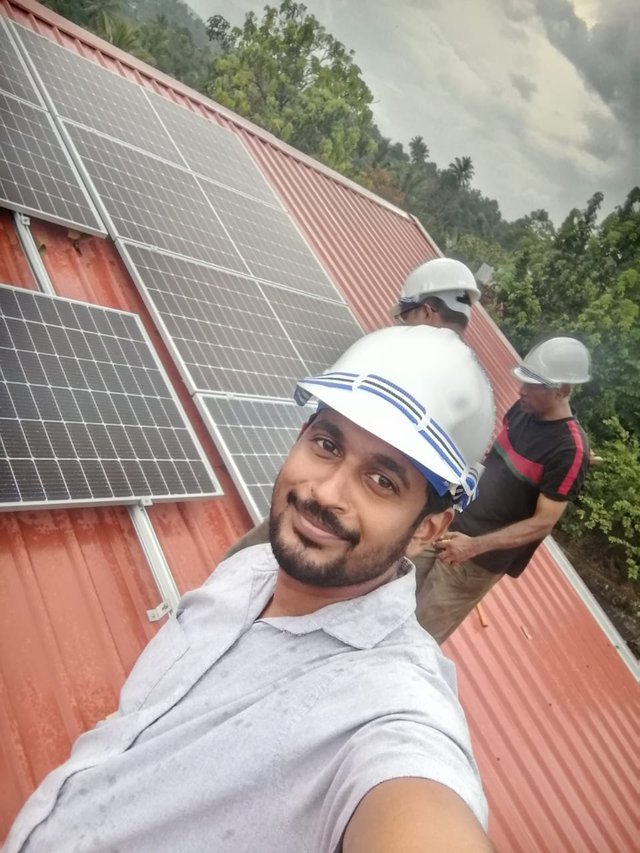
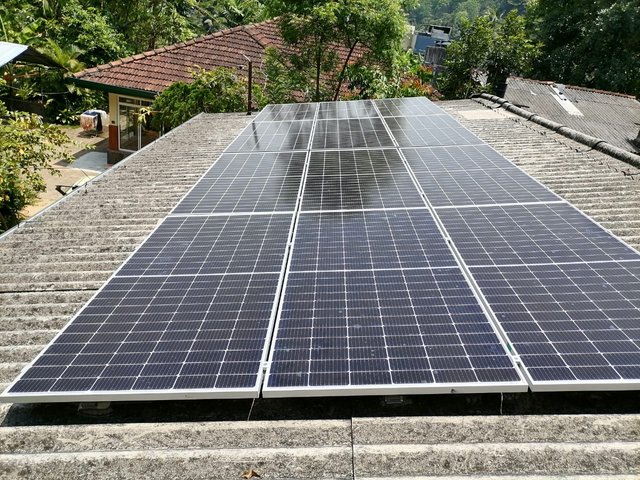.jpeg)
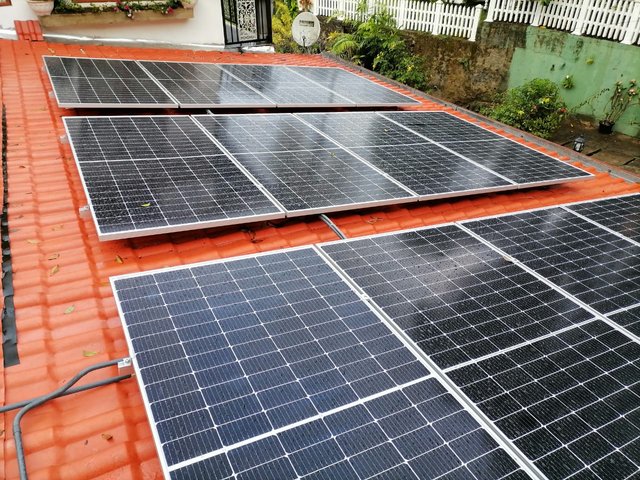
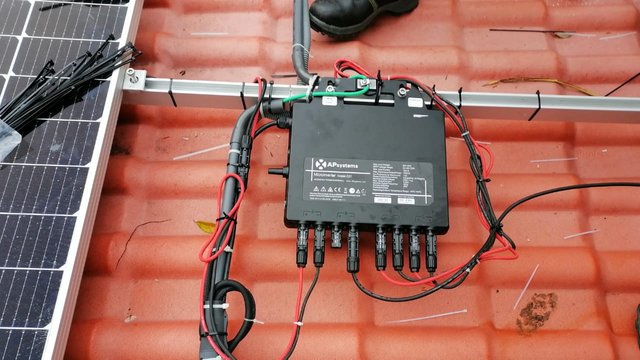.jpeg)
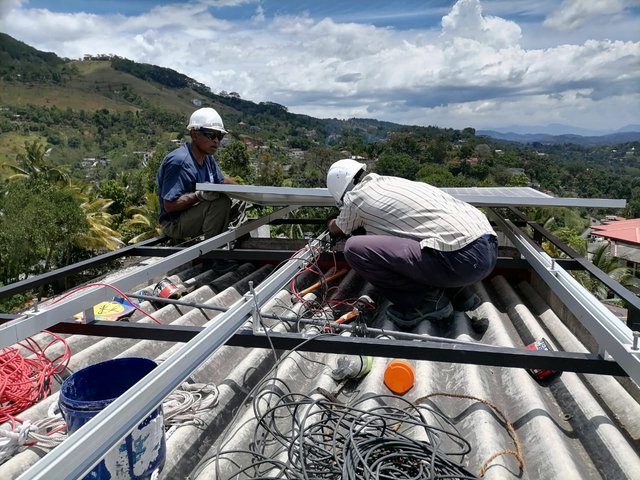.jpeg)
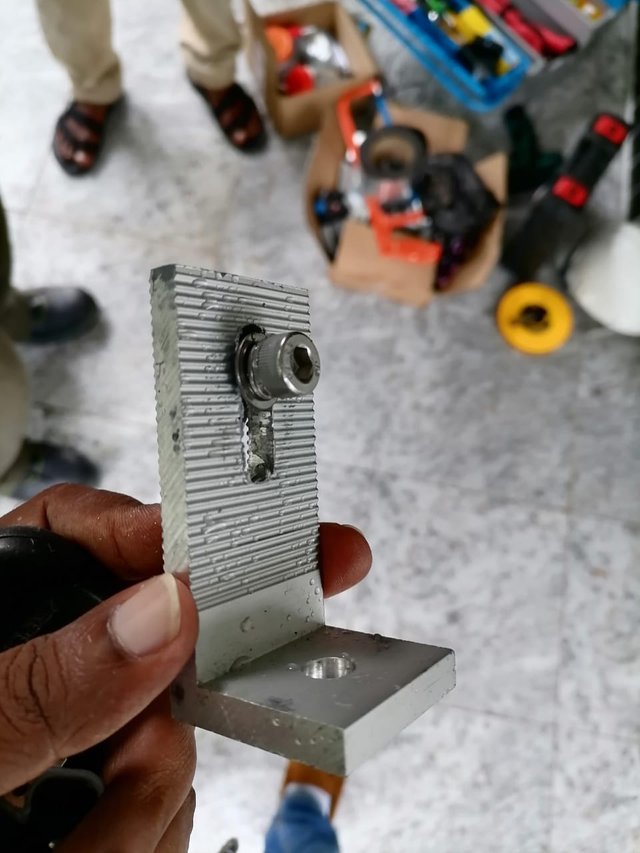.jpeg)
Very interesting post.
Do you cover the whole of Sri Lanka?
Yes, I do. Self satisfaction after completing a neat job is far more worthy than money
wow, you made steemit a place to share knowledge, you will make Sri Lanka shine with your skills as a Renewable Energy Engineer
Thank you very much!!
Yeah, I also interested in this field. But as I know the initial cost is very high in this project. And what about the maintenance? So, is it profitable with the loan recovery?
This is a very interesting article. And good luck with your future works!
Lets say we can fix a 5.4kW system at your home. You can get a loan at 4% interest upto 10 years repayment period. Your monthly installment will be about Rs 8600/-. You can generate about 600 units per month. And for the first 7 years CEB is paying Rs 22/- per unit. Lets say your monthly electricity usage is 150 units. Then you can give 450 units to CEB per month. That means CEB is paying you 450x22=9900. After deducting your loan installment you have Rs 1300 in your hand every month (plus electricity bill is zero).
Conclusion is "loan repays it self!"
Yeah... Fair enough!! Thanks for the time for the explanation!! Let's see in the future!!! Hope to see some more articles on this
Starting your own company is truely remarkable. I also willing to install solar in the future. Maybe I'll contact you then😁
Let me know. I will help. If you want you can participate any of our site. Come and get a hands on experience. Totally free
Thank you very much. I'll let you know🙌
We shouldn't be failed by failures. Good luck!
That's the spirit!
Steem Sri Lanka Discord Channel
✵✵✵✵✵✵✵✵✵✵✵✵✵✵✵✵✵✵✵✵✵✵✵✵✵✵✵✵✵
Woow.. that's really cool..
I was interested in this but you know it's not ma home. I'd like to install a system for my home in the future
Let me know. Will give you a discount!
very interesting and knowledgeable article..
Thank you dear!
wow, very interesting article ❤